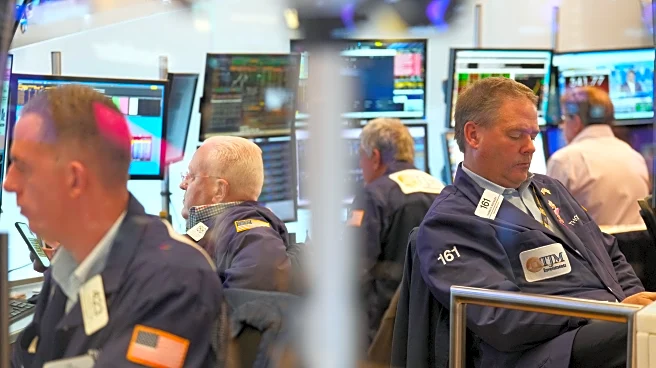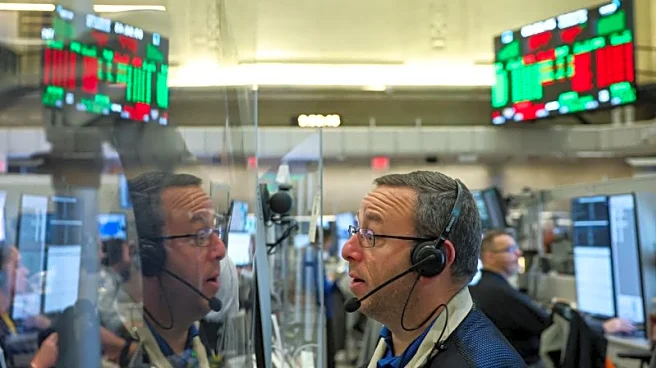What's Happening?
The U.S. agricultural markets are experiencing fluctuations as December corn prices fell by 4 cents to $4.30 per bushel, and January soybeans dropped by 15 cents to $11.19 per bushel. This decline follows
a strong market finish the previous day. According to Karl Setzer of Consus Ag Consulting, the market is undergoing profit-taking after a recent surge driven by a U.S.-China trade agreement. Additionally, news of China purchasing soybeans from Brazil alongside U.S. soybeans has tempered bullish sentiments. Meanwhile, December live cattle prices decreased by 50 cents to $231.70 per hundredweight, while January feeder cattle rose by 90 cents to $337.42 per hundredweight. The broader financial markets also saw declines, with the S&P 500 and Dow Jones Industrial Average both falling.
Why It's Important?
The volatility in agricultural markets reflects broader economic uncertainties and the impact of international trade dynamics. The U.S.-China trade agreement initially boosted market optimism, but the simultaneous purchase of Brazilian soybeans by China suggests competitive pressures that could affect U.S. exports. The fluctuations in cattle prices indicate ongoing challenges in the livestock sector, potentially impacting ranchers' profitability. These market movements are significant for U.S. farmers and traders, as they navigate the complexities of global supply chains and trade policies. The broader market declines in the S&P 500 and Dow Jones suggest investor caution amid these developments.
What's Next?
Market participants will likely continue to monitor international trade developments, particularly U.S.-China relations, which have a significant impact on agricultural exports. The response of U.S. farmers to these market conditions, including potential shifts in planting and production strategies, will be crucial. Additionally, any changes in government trade policies or new agreements could further influence market dynamics. Stakeholders will also watch for any adjustments in China's purchasing patterns, which could affect U.S. market stability.













